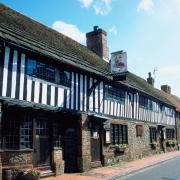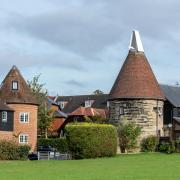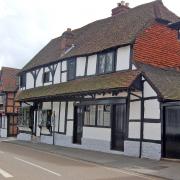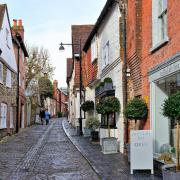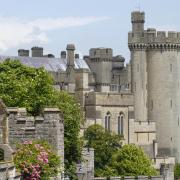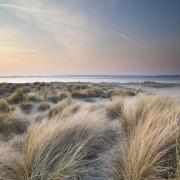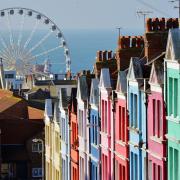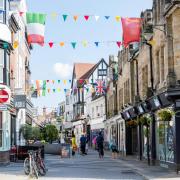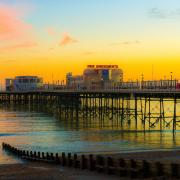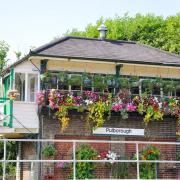Clive Agran continues his quest to unearth the mysteries of Sussex towns. This month it’s Crawley – which this year celebrates its 70th anniversary as a new town
Reluctant though I am to introduce a controversial note so early in this article I have to confess that it has never been an ambition of mine to explore Crawley. Apart from the adjacent Gatwick Airport, which presumably appeals to plane-spotters, is there anything here worth seeing? Charles Kay, a retired information librarian who worked at Crawley Library, believes there is and has kindly offered to reveal some of the town’s secrets to me.
We meet outside Three Bridges station. Formerly known as East Crawley, it was opened in 1841, which suggests Crawley is an old town as well as a new town. Apparently, it’s very old and Saxon settlers named it Crow’s Leah, meaning a crow-infested clearing.
Crawley is too big to walk around and so we take my car. Since I live near Bodiam Castle in East Sussex I feel comfortable parking in Bodiam Close and just hope the crows don’t mess on it. In answer to my searching question, Charles explains the road – like neighbouring Camber Close and Lewes Close – occupy land that was formerly in East Sussex which was absorbed by Crawley after it was designated a New Town in 1947. There’s a connection between seizing land and building castles that I don’t altogether follow but I am assured the christening was humorous rather than triumphant. John Goepel, an employee of Crawley Borough Council, was given the onerous task of choosing names for all the new roads created when the town rapidly expanded after the war and he is the author of a slim volume entitled How I Chose Crawley Street Names.
Our first stop is St Nicholas Church in Worth. Entrance is through an impressive avenue of lime trees known as the Ten Apostles. The truly beautiful Saxon church is roughly 1,000 years old and is comfortably the oldest building in Crawley. Edward the Confessor, who loved hunting in the surrounding great forest of Anderida, had the church built and would certainly have prayed here. The walls of the nave, three great arches and the two transepts are original Saxon work and the two windows on the north side and one on the south side are unique in that there are no other known examples of Saxon windows in the nave of any church.
One of the more notable ‘residents’ in the graveyard is Robert Whitehead, who not only invented the torpedo but was also great grandfather of the Von Trapp family made famous by The Sound of Music.
The distant sound of the M23 is evident at our next stop just off Turners Hill Road. A few hundred yards behind a Holiday Inn stands a magnificent former country mansion in the grounds of what was Crabbet Park that has an extremely colourful history. Built in the Queen Anne style in 1873, it was designed by Lady Anne Blunt, the granddaughter of Lord Byron, and her philandering husband, Wilfrid Scawen Blunt. Venue of the famous Crabbet Club, it welcomed royalty, politicians and most of the movers and shakers of early 20th century British society.
It was also home to the renowned Crabbet Stud, which was the first in this country to import and breed Arab horses. Although they both loved horses, Wilfred Blunt and Lady Blunt apparently didn’t love each other. They divorced and the stud was eventually inherited by their daughter, Lady Wentworth. She died in 1957 and the magnificent Grade I listed house was subsequently converted into flats.
On the other side of the M23 lies the legacy of what was another impressive manor house and park. Sadly, nothing remains of Worth Park Manor, which was once home to a branch of the famous Montefiore family. Its last incarnation was as a girl’s boarding school before, in a pretty dreadful state, it was acquired by Crawley Council and demolished in 1968 to make way for a block of flats.
The gardens, in which the Montefiores had invested enormous sums, remained largely intact and reasonably well-maintained. The structural features, however, were gradually deteriorating and a Friends group was formed in 2006 to work with Crawley Borough Council to try to secure Lottery funding to help with restoration. Undeterred by an initial lack of success, the Friends persevered, money was eventually granted in 2011 and the work completed in 2016.
Formal and somewhat Italian in style with balustraded terraces and plenty of garden ornaments, the park is: “The jewel in Crawley’s crown,” according to Charles. It’s also somewhat sacrosanct to fans of Pulhamite, a man-made, rock-like material that was extensively used in the landscaping of the grounds in the 19th century. Visually, it resembles the sort of thing you might find in Santa’s Grotto. A little rockery around the front of the flats is, apparently, a particularly fine example. “It’s a miracle the thing has survived,” comments Charles, who considers Worth Park on a par with the best National Trust properties.
Having enjoyed our fill of fresh air, we head into downtown Crawley. Charles praises Crawley Council for developing the new town around the nucleus of the old rather than opting for a fresh greenfield site as a few other new towns had done. Surprisingly for those of us who think of Crawley as a relatively modern invention, the high street features a number of genuinely very old buildings.
Names seem to be a recurring theme today but I think I would have preferred that the 16th century George Inn had not been re-branded the Ramada Gatwick Crawley, which rather lacks romance. Anyway, the place flourished in the mid-18th century when Brighton was booming and Crawley was a convenient halfway stop between London and the south coast. The Prince Regent was a visitor here as (later) was Queen Victoria. Lord Nelson stayed here as did many politicians. Part of the attraction, for some of them at least, was the inn’s pugilistic connections. Bare-knuckle fights were big business in the area and, although it didn’t actually stage contests, the George Inn was right in the thick of the action.
Mark Lemon, the first editor of the satirical magazine Punch, lived on the High Street in Crawley from 1858 until his death in 1870. He was a frequent visitor to the George Inn and held editorial meetings there. Less amusingly, John George Haigh, a notorious serial killer in the 1940s known for his ‘acid bath’ murders, stayed at the hotel on numerous occasions, and even dined here on the day he killed one of his victims. A fact that would possibly have interested another customer, Arthur Conan Doyle, had he still been alive.
Our lunch next door is of particular interest because Charles had suggested the Jubilee Oak to Wetherspoons when they approached the library many years ago for help in choosing a name. Would John Goepel have approved? It seems fitting as a sapling planted opposite in 1887 to celebrate Queen Victoria’s Diamond Jubilee is now a massive oak.
Having eaten, we stroll up the road for a quick visit to the grave of Lord Alfred Douglas or ‘Bosie’ as he was known. Best remembered as the lover and friend of Oscar Wilde, he surprisingly married in 1902 and had a son before converting to Catholicism in 1911. He died in Lancing in 1945 and is buried next to his mother in the graveyard of Friary Church of St Francis and St Anthony.
There’s time for just one more grave and, knowing I was a subscriber to Punch magazine, Charles takes me to St Margaret’s church in Ifield on the west side of Crawley to show me where Mark Lemon is buried. Apparently, hundreds of mourners attended his funeral and the local shops closed for the day.
Finally, we stop by Ifield Friends Meeting House. Built in 1676 in an area renowned for non-conformism, it has been used continuously ever since by the Quaker community for worship. One of the oldest purpose-built Friends meeting houses in the world, it’s a Grade I listed building.
All this and Gatwick Airport, too. Apologies, Crawley. I’ll be back.
More…
• The history of Eastbourne - Sussex Life has asked Clive Agran to get the inside story on the county’s best-loved towns and villages by being taken around by the people who know them best. He launches his new series in Eastbourne








